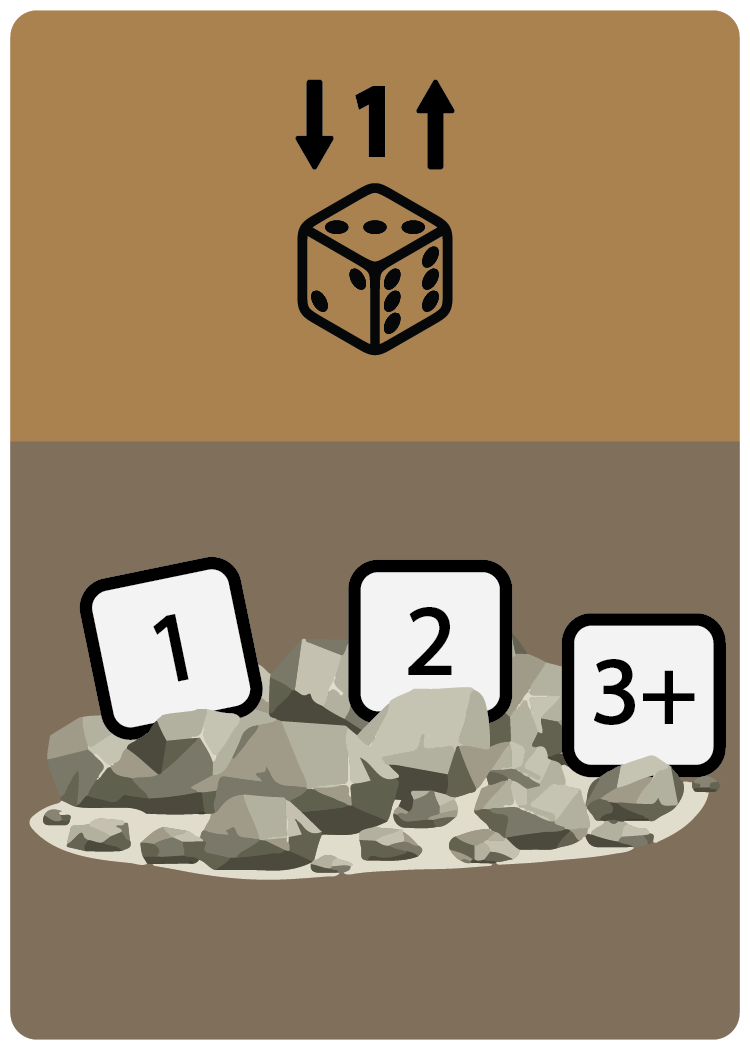Everstone Diary: Entry One
Welcome to the first design diary entry of my first (of hopefully many) board games I have the privilege of bringing to market through crowdfunding! Every two weeks, the Friday blog post will continue this thread, sharing the backstory and behind-the-scenes of the game's development. Thank you for joining these blogs.
The Harvest Action
Today I wanted to jump into the harvest mechanic of the game. It’s one of the four main actions you take in the game. It’s also the only action that has (mostly) remained untouched as the game has gone under further development.
(Please note this is just a portion of the main board and is still in prototype form.)
When you take a harvest action in the game, you start by rolling three dice. You will then choose two of the dice to add together. This sum will determine which of the three resource tracks you will move up one space. The third die that was not picked determines the quantity of that resource type you gain.
Example:
You roll a 3, 2, and 6. This gives you the following options:
You can go up the blue resource track (2-5) by adding the 3 & 2 together, which would gain you six blue resources
You can go up the yellow resource track (6-8) by adding the 6 & 2 together, which would gain you three yellow resources
You can go up the red resource track (9-12) by adding the 3 & 9 together, which would gain you two yellow resources
This idea was inspired by Sid Sackson’s game called Can’t Stop. The decision of pairing off the four dice you roll in Can’t Stop is such a quick, satisfying decision that I wished was present in a heavier game, so eventually, it found its way into Everstone!
Two main issues became apparent after playing around with the harvest action in open and closed playtests early on. Players always used the highest rolled die for resources, and they didn’t like the luck associated with dice rolling to determine the resources they had available in the game. To solve these issues, I eventually landed on using the backs of the relic cards to provide more player agency.
(prototype art, NOT what the final product of the game will look like)
The back of the relic cards displays two pieces of information: the “free tool” and the relics discovery combination.
The free tools were introduced to give players more control over what their roll is when they harvest. It’s a die manipulation that can be performed once for free without spending any resources. There are (currently) three different actions you can perform from card backs, but only the one on the top of the deck is available for free when harvesting.
The discovery combination on the bottom of the card back came about when building out more of the theme in Everstone. The game's core loop is finding/acquiring these broken-down lost relics and gathering resources to repair them.
“What if while traveling around the world of Ignis, you discovered a relic still in working condition?”
This thought led to the game's “discovery” mechanism. If, while harvesting, you can manipulate the dice to match the discovery combination on the top of the relic deck, you may choose to give up the resources and track movement you would gain to draw the top card from the deck and use it immediately. This allows you to skip having to pay the resource cost you would need to repair the relic.
Discovering a relic can be super powerful if it’s the one you need, but if it doesn’t work with the engine you are building, it may slow you down on your path to victory.
These are two of the early mechanisms that shaped the development of Everstone. I look forward to sharing more of the game's journey in two weeks.


